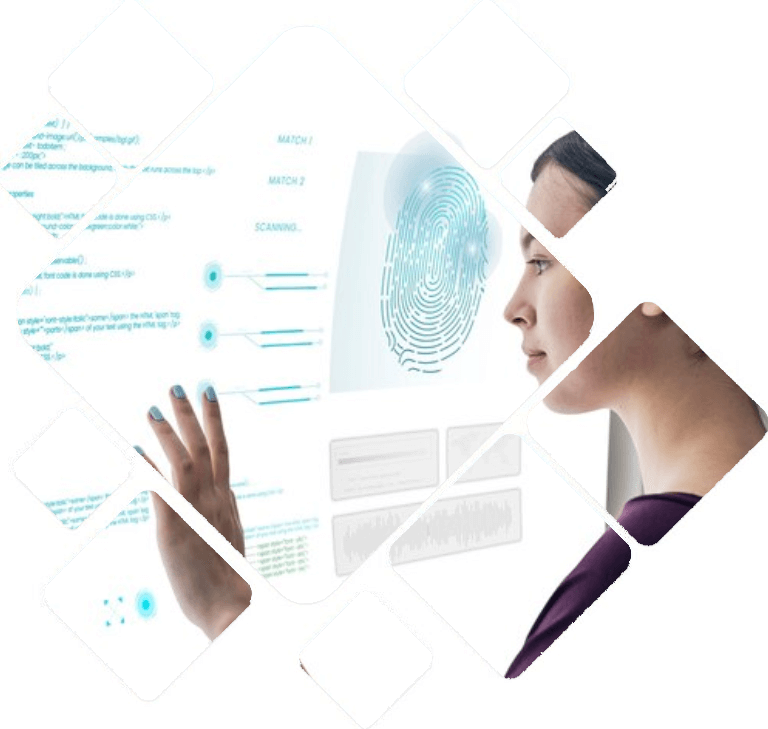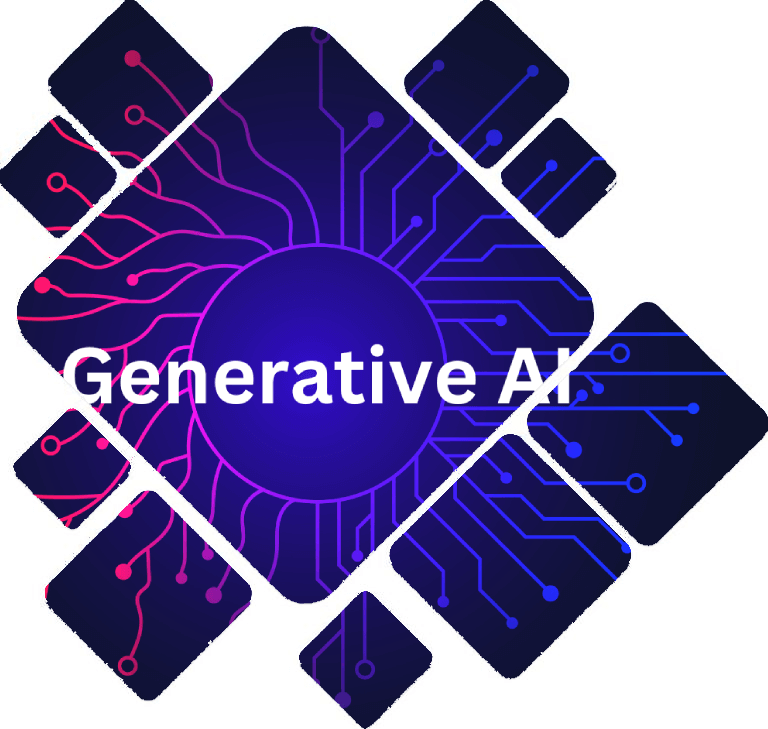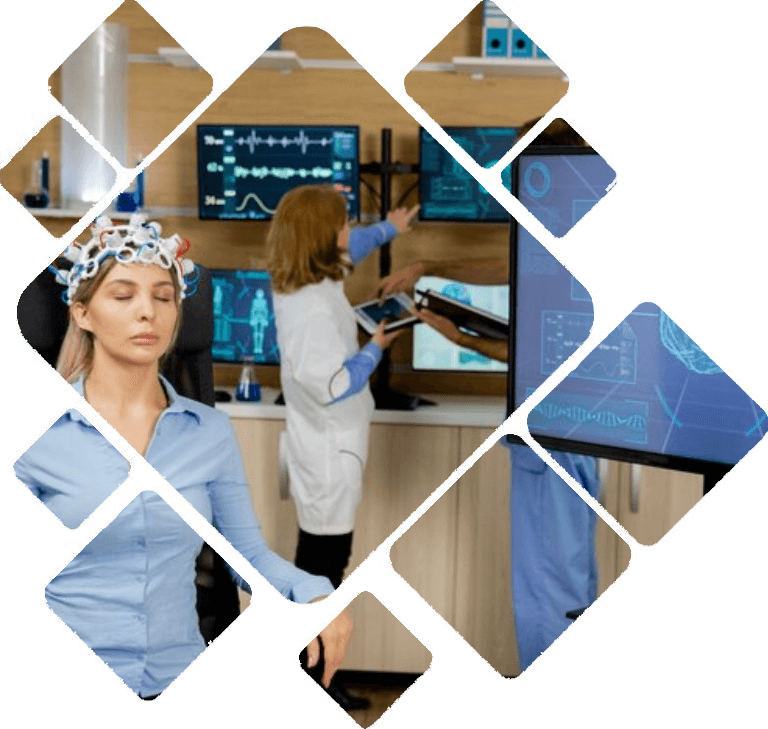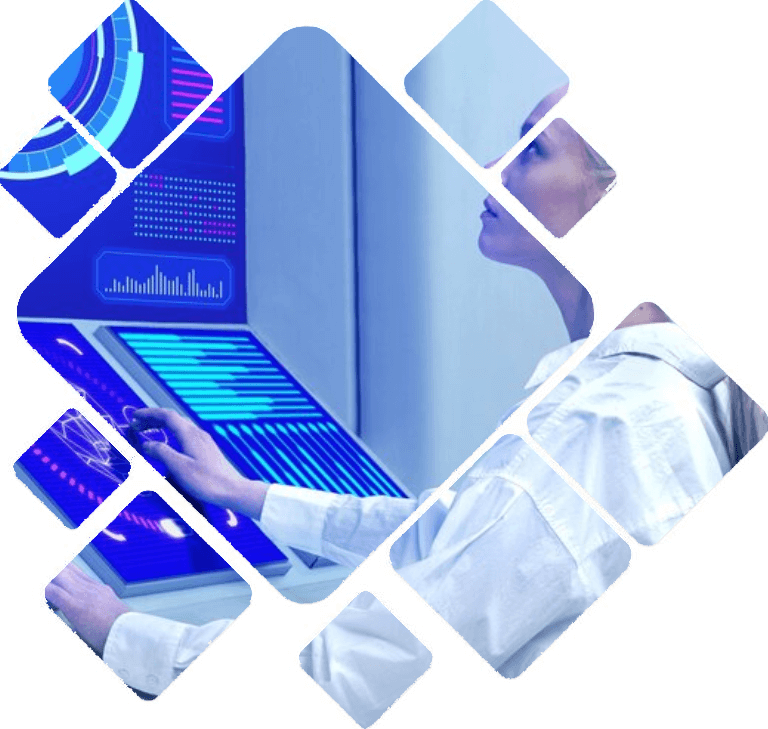Our platform empowers businesses and industries with cutting-edge AI technologies, driving efficiency, innovation, and growth. From predictive analytics and computer vision to generative AI and specialized applications in healthcare, finance, and cybersecurity, we offer comprehensive solutions tailored to diverse needs.
With capabilities like advanced forecasting, behavior prediction, image and video recognition, intelligent automation, and natural language processing, we simplify complex processes and deliver actionable insights. Whether it’s streamlining workflows, enhancing decision-making, or safeguarding systems, our AI-powered tools transform challenges into opportunities.
Join us in harnessing the full potential of artificial intelligence to revolutionize your operations and achieve lasting success in the digital age.
Comprehensive Business Intelligence and Analytics Solutions
We provide end-to-end consulting services to help businesses unlock the full value of their data. Our expertise spans:
1. Predictive Analytics (Forecasting, Behavior Prediction, Fraud Detection)
Predictive analytics uses historical data and machine learning models to predict future trends and behaviors.
- Forecasting: Leverages data from past performance (e.g., sales, demand) to predict future trends and help businesses plan accordingly.
- Behavior Prediction: Analyzes patterns in customer or employee behavior to anticipate actions, preferences, or needs. This is particularly useful for marketing campaigns, product recommendations, or improving customer service.
- Fraud Detection: Identifies unusual patterns in data that may indicate fraudulent activity, helping to prevent financial fraud, identity theft, or cybersecurity threats before they happen.
2. Computer Vision (Image Recognition, Video Analytics, OCR)
Computer vision allows machines to interpret and analyze visual data, mimicking human visual perception.
- Image Recognition: Identifies objects, people, or places in images, which can be applied in a wide range of fields, from security (face recognition) to healthcare (identifying medical conditions in X-rays).
- Video Analytics: Analyzes video feeds to extract valuable insights, such as identifying unusual behavior, counting people in a store, or detecting traffic violations.
- OCR (Optical Character Recognition): Converts different types of documents, such as scanned paper documents or images, into editable and searchable data. This can help automate document management and data extraction.
3. Natural Language Processing (Chatbots and Virtual Assistants)
Natural Language Processing (NLP) focuses on the interaction between computers and human language.
- Chatbots: AI-driven conversational agents that interact with users in real-time, providing customer service, support, and automating routine tasks like answering FAQs or processing requests.
- Virtual Assistants: Similar to chatbots, but often more advanced, virtual assistants (e.g., Siri, Alexa) can perform a wider range of tasks, such as setting reminders, managing schedules, or controlling smart devices through voice commands.
4. Automations (Workflow Automation, Document Processing)
Automation leverages AI and machine learning to perform repetitive tasks, increasing efficiency and reducing human error.
- Workflow Automation: AI can streamline business processes by automatically managing workflows, approvals, task assignments, and routing documents or requests through systems without manual intervention.
- Document Processing: AI tools can extract, categorize, and process information from documents (e.g., invoices, contracts, or emails), saving time and improving accuracy in administrative tasks.
5. Generative AI (Content Creation)
Generative AI is a subset of AI that focuses on creating new content based on input data, often used in areas like marketing and media.
- Content Creation: AI models can generate text, images, videos, and even music. For example, generative AI tools can write articles, create social media posts, design logos, or generate product descriptions automatically, allowing businesses to scale content production with less effort.
6. AI for Healthcare (Disease Diagnosis, Health Monitoring)
AI in healthcare is revolutionizing patient care by enhancing diagnostic accuracy, predicting health outcomes, and improving operational efficiency.
- Disease Diagnosis: AI models can analyze medical images (X-rays, MRIs, etc.), genetic data, and patient history to assist doctors in diagnosing diseases with greater accuracy, reducing human error.
- Health Monitoring: AI-powered devices and apps can continuously monitor patient health, track vital signs, and alert healthcare providers of any significant changes, enabling early intervention and better chronic disease management.
7. AI in Finance (Credit Scoring, Portfolio Optimization)
AI is transforming the financial industry by improving decision-making, reducing risk, and enhancing customer experiences.
- Credit Scoring: AI models analyze a person’s financial history, transaction data, and other factors to assess creditworthiness more accurately and fairly than traditional methods, helping financial institutions minimize default risk.
- Portfolio Optimization: AI uses historical data and real-time market information to recommend adjustments to investment portfolios, optimizing returns and managing risks based on individual or institutional financial goals.
8. AI for Cybersecurity (Threat Detection, Phishing Prevention)
AI plays a crucial role in safeguarding digital assets and identifying potential threats in real-time.
- Threat Detection: AI algorithms monitor networks and systems for unusual patterns or anomalies that may indicate a cyberattack, such as malware, data breaches, or system vulnerabilities, providing early alerts and enhancing security response.
- Phishing Prevention: AI can identify suspicious emails, messages, or websites attempting to trick users into revealing sensitive information by analyzing language patterns, metadata, and other indicators of phishing attempts.
Real-World Impact AI/ML Use Cases
Predictive Analytics
Retail Forecasting : A global retail chain uses predictive analytics to forecast demand for products, ensuring the right amount of stock is available at the right time, minimizing waste, and improving customer satisfaction.
Fraud Detection in Banking: A financial institution employs predictive analytics to detect fraudulent transactions by analyzing historical data, identifying patterns that indicate fraud, and flagging suspicious activity in real time


Computer Vision
Healthcare Imaging: A hospital uses image recognition to automatically detect abnormalities in X-ray and MRI images, aiding doctors in diagnosing diseases like cancer or pneumonia with greater accuracy.
Autonomous Vehicles:Autonomous Vehicles: A self-driving car company uses computer vision to interpret data from cameras and sensors, helping vehicles navigate and make decisions, such as avoiding obstacles or recognizing traffic signs.
OCR in Retail: Retailers use OCR technology to digitize paper invoices, automatically extracting product details and prices to streamline inventory management and accounting processes.
Natural Language Processing (NLP)
Customer Support Chatbots: A telecommunications company uses AI-powered chatbots to handle customer inquiries about billing, technical support, and service updates, reducing wait times and improving customer experience.
Virtual Health Assistants: A healthcare provider integrates a virtual assistant to provide patients with appointment scheduling, reminders for medications, and general health advice, improving patient engagement and satisfaction.


Automations
Workflow Automation in HR: A large corporation uses workflow automation to streamline its employee onboarding process, automatically sending welcome emails, processing forms, and scheduling orientation sessions without manual intervention
Document Processing in Legal Firms: A law firm implements document processing automation to scan and categorize legal documents (e.g., contracts, case files), enabling faster document retrieval and reducing administrative workloads.
Generative AI
Content Creation for Marketing: A digital marketing agency uses generative AI to automatically generate blog posts, social media content, and email campaigns, allowing them to produce a high volume of content quickly while maintaining quality.
AI-Generated Design in Fashion: A fashion brand leverages generative AI to design new clothing styles by analyzing historical trends, customer preferences, and color patterns, accelerating the design process and enhancing creativity.


AI for Healthcare
Disease Diagnosis with AI Imaging: A hospital uses AI-powered imaging systems to analyze CT scans and X-rays, helping radiologists detect early-stage diseases like lung cancer, reducing diagnostic time, and improving patient outcomes.
Health Monitoring in Wearables: A fitness company incorporates AI into its wearable health monitors, enabling continuous tracking of heart rate, sleep patterns, and physical activity. The system sends real-time alerts if any health abnormalities are detected.
AI in Finance
AI in Credit Scoring: A fintech company uses AI-based credit scoring to assess the creditworthiness of individuals with limited credit history, enabling them to offer loans to more people, including those in underserved communities.
Portfolio Optimization in Wealth Management: A wealth management firm uses AI algorithms to optimize investment portfolios based on real-time market data, adjusting the portfolio to maximize returns while minimizing risk according to the client's investment goals.


AI for Cybersecurity
Threat Detection in Enterprise IT: A global enterprise uses AI-powered threat detection systems to monitor network traffic and flag any suspicious activity. The system learns to differentiate between normal and abnormal behavior, alerting the security team about potential threats such as ransomware attacks.
Phishing Prevention in Email Systems: An email security provider uses AI to analyze incoming emails for phishing attempts by examining email metadata, language patterns, and links. The system automatically filters out malicious emails, preventing employees from clicking on harmful links.
Frequently Asked Questions
Predictive analytics uses historical data to forecast future outcomes, often leveraging statistical methods and machine learning techniques. While predictive analytics focuses on making predictions, machine learning is a broader field that enables computers to learn from data and improve over time without being explicitly programmed.
AI-powered computer vision can enhance your business by automating tasks that involve image or video analysis, such as defect detection in manufacturing, facial recognition for security, or analyzing customer interactions in retail. It can improve accuracy, reduce human error, and save time in processes that rely on visual data.
NLP-based chatbots and virtual assistants can automate customer support, provide real-time answers to frequently asked questions, streamline administrative tasks, and enhance user experience by providing 24/7 assistance. This reduces response time and allows human agents to focus on more complex tasks.
AI can automate a wide range of tasks, including workflow management (approvals, task assignments), document processing (scanning and categorizing), email responses, data entry, inventory management, and more. This reduces manual effort, improves efficiency, and accelerates decision-making.
Generative AI is a type of AI that can create new content such as text, images, and videos based on input data. It can automate content creation for marketing, social media posts, articles, product descriptions, and even design work, saving time and allowing businesses to scale their content output.
AI in healthcare can assist in diagnosing diseases more accurately by analyzing medical images and patient data, helping doctors make better-informed decisions. AI also plays a role in continuous health monitoring through wearables, alerting healthcare providers about any changes in a patient’s condition and enabling early intervention.
AI can improve credit scoring by analyzing a wider range of data points beyond traditional credit history, offering more accurate and fair assessments. In portfolio management, AI uses real-time data and predictive models to optimize investment strategies, balancing risk and maximizing returns based on client objectives.
AI can identify and analyze threats in real time by recognizing abnormal patterns in network traffic or behavior, allowing faster detection and response to cybersecurity incidents. For phishing prevention, AI analyzes emails and websites to detect malicious content, preventing employees from falling victim to phishing scams.
AIML solutions can benefit various industries including healthcare, finance, retail, manufacturing, cybersecurity, marketing, logistics, and education. Any industry that handles large amounts of data can leverage AIML to improve decision-making, automate processes, and deliver better outcomes.
Getting started with AIML solutions begins with understanding your business challenges and objectives. Contact us for a consultation, where we’ll evaluate your needs, recommend suitable AIML solutions, and work with you to implement them. Whether it’s predictive analytics, automation, or computer vision, we can guide you through the entire process.
Discover the Advantages of AI Solutions
Want us to get back to you?

No 92, 3rd Floor, Greeta Tech Park, VSI Industrial Estate, Perungudi, Chennai - 600 096 Tamil Nadu, INDIA
p: (+91) 044 49521562
For Support: [email protected] For Enquiry: [email protected] For Sales: [email protected]
